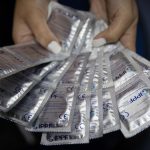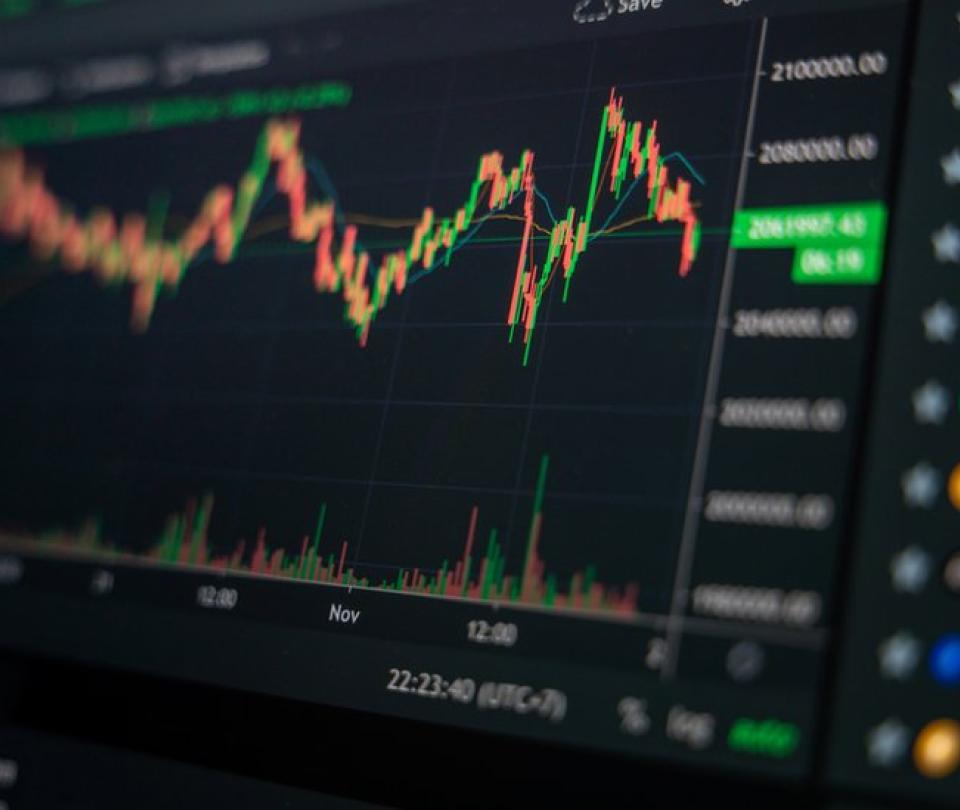Peru represents a rare example of economic stability in Latin America.
Many experts have even spoken of a “Peruvian economic miracle” due to its sustained growth in recent decades, only interrupted by the blow of the pandemic.
Although in broad sectors there is discontent over the persistence of inequalities in the country, the macroeconomic figures of its recent history are cited as an example of success in the manuals.
One of the reasons experts cite is the stability of the Peruvian currency, the sol.
Waldo Mendoza, economist at the Pontifical Catholic University of Peru and Minister of Economy in the government of Francisco Sagasti (2020-2021), told BBC Mundo that “if one observes the behavior of the exchange rate in Latin America, that of Peru is the least volatile.
In other words, the Peruvian currency is the one that sees its value fluctuate the least with respect to the reference currency, the dollar, and does not show the tendency to pronounced devaluations in adverse economic times typical of other economies in the region.
His behavior so far this year seems to support Mendoza’s statement. According to the currency ranking prepared by the Bloomberg agency, the sol is the second Latin American currency that has performed best against the dollar in 2022, only surpassed by the Uruguayan peso.
The stability in the price of its currency is achieved thanks to a strategy of the Central Reserve Bank of Peru (BCRP) known as “dirty float”.
The price of the dollar measured in units of the local currency or exchange rate is a key aspect in the economy, especially for countries such as Latin America, in which the US currency plays a leading role and is used in many exchanges, services and credits. .
In economics, three main models of exchange rate regime are distinguished.
With the fixed exchange rate, the price of the foreign currency remains constant over time, but this requires permanent intervention by the central bank in the market, buying or selling dollars as necessary to modulate supply and demand, and thus maintain the exchange rate at the desired level.
Not many places apply this model. A typical case is that of the Chinese autonomous territory of Hong Kong. In Latin America, Bolivia still maintains it and it was in force in Chavista Venezuela for years.
In the floating exchange rate model, the exchange rate moves freely, since the central bank never intervenes in the foreign exchange market. It is the one followed by the European countries that share the euro, or in Latin America, for example, Chile. This can lead to large fluctuations influenced by the current situation or external economic factors.
And then there is the dirty float model that Peru follows, in which the exchange rate also fluctuates, but in a very limited way.
Why?
Due to an also limited intervention of the central bank in the market. In Mendoza’s words, “the central bank rows against the current in the foreign exchange market. It tends to buy dollars when the exchange rate falls, and it tends to sell when the exchange rate rises.” In this way it is possible to keep its price relatively stable.
It is a common model in emerging economies where the authorities use it to protect their currencies from large unwanted fluctuations.
Some of the largest dirty float economies include India, Singapore, Turkey and Indonesia. In the latter two, the central banks intervened in 2014 and 2015 to support their respective local currencies.
In Peru, it has been carried out in a sustained manner by the Central Reserve Bank of Peru (BCRP) and experts agree that it has been one of the keys that explains the monetary stability of recent years, which contrasts notably with what happened in other times in history, such as the hyperinflation of the late 1980s, which still brings back bitter memories for many Peruvians.
The Central Reserve Bank of Peru began to intervene in the foreign exchange market during the economic stabilization policy of the 1990s, when the government of Alberto Fujimori carried out an aggressive liberal economic reform.
When Fujimori came to power in 1990, Peruvians lived under the hyperinflation inherited from the first government of Alan García, which devoured their purchasing power and the credibility of the Peruvian currency at the time, the inti. In 1991, a new national currency, the new sol, was created, and stabilizing its value became a priority for the new government.
At first it was done following a fixed exchange rate model, but it was soon relaxed and the dirty float model was adopted, which has been maintained to date and has helped the sun to weather some of the financial turbulence of recent years.
In the early years, limited and sporadic interventions were used, but starting in 2002, when the BCRP adopted the so-called Inflation Targeting Scheme, the declared official objective of keeping price rise levels within a range of 1% and 3%, the dirty float was institutionalized.
The successive rectors of the bank have remained faithful to it, to the point that, according to Mendoza, “there is no central bank that intervenes more in the foreign exchange market than the Peruvian.”
According to the figures collected in its inflation report, the BCRP intervened 82% of the days in 2021 and so far in 2022 it has offered US$1.8 billion to keep the exchange rate stable.
But the Peruvian has some peculiarities with respect to the dirty float of other countries.
Diego Macera, an expert at the Peruvian Institute of Economy and a member of the BCRP board, told BBC Mundo that “the most important difference with other systems is that Peru does not have fixed rules before the intervention.”
“In other countries, it was possible to know more clearly the moment and magnitude of the central bank’s intervention, which makes it possible to manipulate the system. The BCRP has more discretion, which allows it to be more effective in reducing volatility.”
As the Peruvian Central Bank does not announce in advance when it is going to intervene in the market, nor how intensely it is going to do so, the uncertainty deters speculators interested in eroding the national currency with short-term maneuvers.
That happened to the British pound when in 1992 a speculative attack by the financier George Soros ended up forcing its exclusion from the European Exchange Rate Mechanism, the system agreed upon by the countries that ended up adopting the euro before its entry into force.
Macera points out other advantages of the model applied in Peru: “It binds less than the fixed exchange system, which can carry a greater risk of rapid draining of reserves and speculation against our currency.”
The BCRP is also very active in buying dollars at favorable times to maintain its reserve levels and its ability to intervene in adverse times, exploiting the weight of mineral exports in the Peruvian economy.
“When the price of minerals rises, the price of the dollar tends to fall and that is when the BCRP buys dollars,” explains Mendoza. “In good times it accumulates a lot and that has allowed it to be one of the central banks with the most international reserves.”
The BCRP has US$76.1 billion, which means 30.5% of Peru’s Gross Domestic Product.
Chile, for example, despite having a higher GDP than Peru, has approximately US$30 billion less in international reserves.
Macera explains that the high availability of reserves is key to the success of the dirty float: “The credibility of BCRP’s intervention in the market is particularly important, and it is achieved with a good historical track record of the institution and with a level of international reserves significant”.
This was what allowed the bank to act energetically, as in 2009, when Peru was shaken by the consequences of the global financial crisis, or more recently by the flight of capital that caused the fear of some investors after the arrival to the presidency of Pedro Castillo in July 2021.
But the exchange rate is not the only variable, nor is keeping it stable enough to solve all the economy’s problems. The Peruvian currently has some.
The Central Bank recently lowered its growth expectations for this year from 3.4% to 3.1%. Experts agree that it is too low a rate for an emerging economy, which at that rate will have difficulty creating employment in significant volumes.
Nor is a stable exchange rate enough to correct the effects of the fall in mining production, a fundamental item for Peru, due to the conflicts that have paralyzed some of the country’s main mines.
And then there is the great problem of our days, inflation, spurred by Russia’s invasion of Ukraine, from which Peru is not spared either. It is estimated that it will close the year at 6.4%, when the previous forecast was 3.5%.
The BCRP does not expect inflation to return to its target levels until at least the end of 2023.
“A large part of this is due to the price of wheat, oil and other imported products that represent between 30% and 50% of the local basic basket and that will follow their own dynamics associated with the war,” says Mendoza. .
The BCRP is trying to contain this, like other central banks, with increases in interest rates, which indirectly also helps to limit a possible increase in the exchange rate.
But, as Mendoza warns, “that is cooling the economy and it will have costs, because it is the highest inflation in a long time.”
Now you can receive notifications from BBC World. Download the new version of our app and activate it so you don’t miss out on our best content.
BBC WORLD













Add Comment